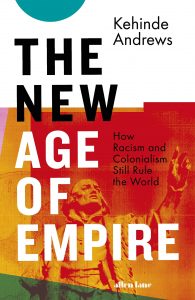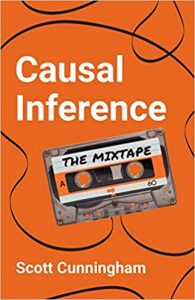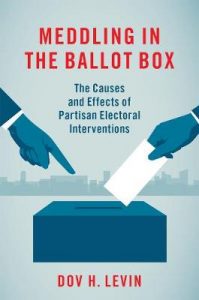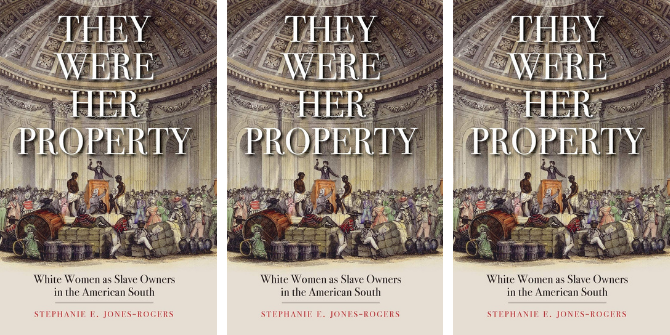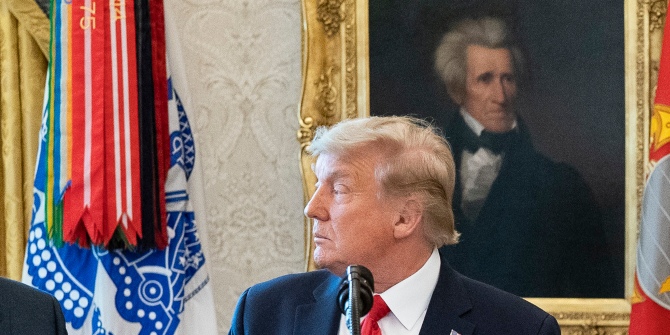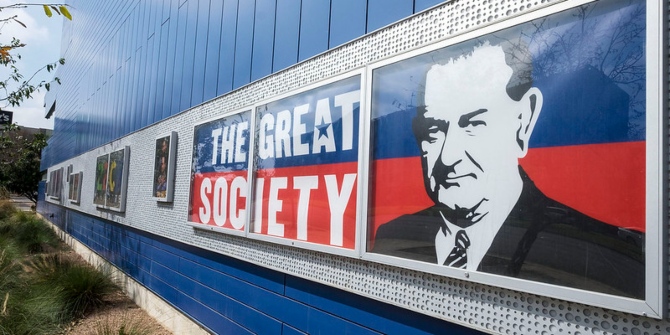

 What determines how death penalty cases are covered by the media? In new research, Richard L. Vining, Jr., Teena Wilhelm and Jack D. Collens argue that the press does not treat all cases equally, and that they are more likely to report on cases that will have broad appeal and increase their sales and profits. They find that a newspaper is nearly 60 percent more likely to cover a death penalty case decision if the offender is a woman and about 30 percent more likely if the sentence or conviction is overridden.
What determines how death penalty cases are covered by the media? In new research, Richard L. Vining, Jr., Teena Wilhelm and Jack D. Collens argue that the press does not treat all cases equally, and that they are more likely to report on cases that will have broad appeal and increase their sales and profits. They find that a newspaper is nearly 60 percent more likely to cover a death penalty case decision if the offender is a woman and about 30 percent more likely if the sentence or conviction is overridden.
One persistent assumption among scholars of state politics is that capital cases are salient, or have the potential to be salient, to judges and citizens. That is, death penalty cases are more interesting to the public than others decided by state supreme courts. A Louisiana justice admitted to Melinda Gann Hall decades ago that he voted contrary to his preferences in capital cases to appease the public, largely because they had the potential to be newsworthy and generate unwanted negative attention. A steady stream of systematic, empirical research has reaffirmed the influence of constituents on death penalty decisions. One need look no further than the famous electoral defeats of multiple California justices (1986) and Tennessee Supreme Court Justice Penny White (1996) to see the potential consequences of shirking public and elite preferences in capital cases. However, we have little evidence regarding which death penalty decisions are likely to be salient for the press, public or elites. Although scholars have studied news about murder trials and executions, we lack systematic information about coverage of state high courts’ death penalty rulings. Given that the media inform the public and elites about the activities of judicial institutions, we believe it is necessary to understand which cases the press finds newsworthy and why. In new research, we present a market-based model of state Supreme Court news, arguing that the press focuses on cases that are likely to attract a broader audience and therefore increase their revenues and profits.
Research by Doris Graber and others established that news outlets devote space in the news hole to events based on their potential impact, degree of conflict or scandal, familiarity, proximity (to the news outlets’ base of operations), and timeliness (or novelty). While we acknowledge the importance of this research, we draw primarily on the economic model of news content advanced by James T. Hamilton. It assumes that news outlets seek to maximize revenues by drawing more readers/viewers and, as a result, more sales and advertising. This is achieved by providing a mix of hard and soft news of interest to a diverse audience. A key component of this theory is the need to provide news that appeals to both the typical hard news consumer and potential audience members who lack interest in news for its own sake.
We apply this framework to coverage of death penalty appeals in state supreme courts to determine whether case characteristics appealing to a mass audience influence the selection of news content. We identified factors that are novel or sensational (White, juvenile, female, or intellectually disabled offender, more victims, elderly or juvenile victims, and fewer executions in the state over time), indicative of higher stakes (amicus filings, constitutional issues, non-procedural issues), or dramatic (conviction/sentence overrides, dissent). We also controlled for (state-specific) institutional factors related to the type of judicial selection system and journalistic norms (gatekeeping via prior coverage).
Our analysis determined which factors lead to front-page coverage or any coverage in the most circulated newspaper in 27 death penalty states on the day after a decision. It includes about three-fourths of the capital cases from 1995 to 1998 in the State Supreme Court Data Archive compiled by Paul Brace and Melinda Gann Hall. We focus on the conditions associated with providing any news content about a state high court’s decision in a death penalty case rather than only front-page coverage.
Figure 1: Likelihood of Any Coverage of Death Penalty Case Decision
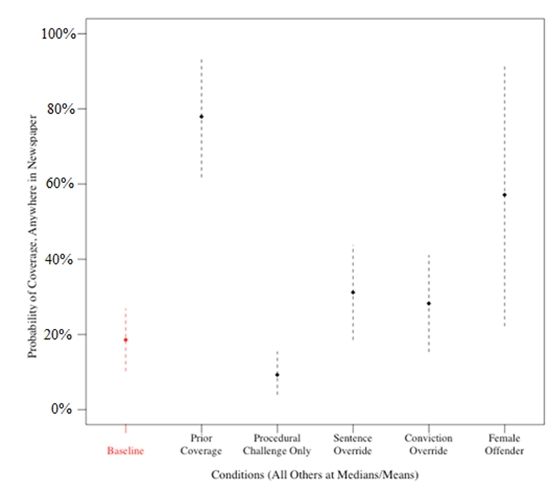
Figure 1 above displays the predicted likelihood that a newspaper will devote attention to a death penalty decision if certain conditions are met. In red is a baseline prediction (an 18.6 percent likelihood), which shows the predicted likelihood of covering a case with a male offender, one victim, no prior coverage, and an actual/non-procedural challenge. When the paper has recently covered a case, the likelihood of covering the outcome increases to 78 percent. Sentence overrides (31.2 percent) and conviction overrides (28.2 percent) increase substantially the likelihood of coverage. This is not surprising as the decision to reverse a sentence of death or conviction is a dramatic event and implies that judges are shirking the public’s wishes. Cases with only procedural challenges are about half as likely to be covered, as the likelihood drops from 18.6 percent to 9.2 percent.
Finally, the likelihood that a case receives media attention increases to 57.2 percent when the offender is a female. The novelty of such cases makes them interesting to the public. However, their rarity also reduces our confidence in the prediction as indicated by the wide confidence interval for female offenders.
These results of the analysis are interesting because of both the significant findings and the factors that fail to influence coverage. General coverage of capital cases does not increase as a result of a fewer executions in the post-Gregg era (but we do find a positive relationship between execution novelty and front-page coverage). We also do not find that newspapers in states with elected judges pay more attention to death penalty decisions. This is surprising given the greater potential role of the press in elective rather than appointive selection systems. We also find that few case facts fail to influence coverage, though the number of victims and the offender’s gender do so.
Our findings demonstrate that journalists are selective when deciding whether to cover state high courts’ death penalty decisions. States’ elite newspapers (and, by extension, the public) pay more attention to cases which are novel or sensational (with female offenders or a greater number of victims), have higher stakes (focus on non-procedural challenges), or result in more dramatic outcomes (conviction/sentence overrides). Typical indicators of legal salience including constitutional issues, amicus filings, judicial dissent, and offender/victim status fail to attract media coverage systematically. This means that we should not assume that media treat all death penalty cases equally, or that all death penalty cases are particularly high-profile and salient. Our results provide a more nuanced look at public fascination with our country’s most punitive form of justice.
This article is based on the paper ‘A Market-Based Model of State Supreme Court News Lessons from Capital Cases’, in State Politics & Policy Quarterly.
Featured image credit: Credit: Daniel R. Blume (CC-BY- SA-2.0)
Please read our comments policy before commenting.
Note: This article gives the views of the author, and not the position of USApp– American Politics and Policy, nor of the London School of Economics.
Shortened URL for this post: http://bit.ly/1MDYnAo
_________________________________
 Richard L. Vining, Jr. – University of Georgia
Richard L. Vining, Jr. – University of Georgia
Richard L. Vining, Jr., is an Associate Professor in the Department of Political Science at the University of Georgia. His research focuses on the interaction of American courts with other institutions including the media.
_
_
 Teena Wilhelm – University of Georgia
Teena Wilhelm – University of Georgia
Teena Wilhelm is an Associate Professor in the Department of Political Science at the University of Georgia. She studies political institutions in the American states, with particular emphasis on state courts.
_
_
 Jack D. Collens – Siena College
Jack D. Collens – Siena College
Jack D. Collens is an Assistant Professor of Political Science at Siena College in Loudonville, New York. His research examines the intersection of American political institutions (including parties and the media) and elections.







